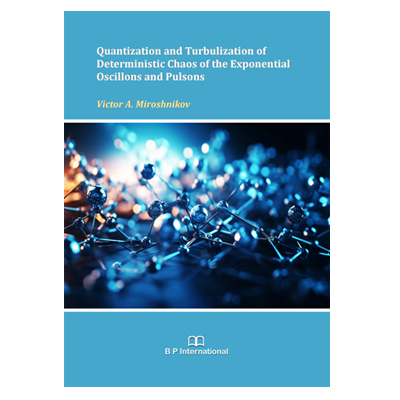Deterministic chaos was introduced in [14] as a mathematical model, which is capable to provide an adequate description of experimental results on wave turbulence. This book contains a novel exact solution for deterministic chaos of the exponential oscillons and pulsons, which is computed in terms of various invariant structures: experimental deterministic scalar kinematic structures, experimental deterministic vector kinematic structures, experimental deterministic scalar dynamic structures, and experimental deterministic vector dynamic structures. The successful application of these invariant structures is stipulated by their exact similarity to the Navier-Stokes equation that represents a superposition of kinematic terms and dynamic terms with an algebraic nonlinearity.
The method of decomposition in invariant structures was systematically presented in [4], where experimental deterministic scalar kinematic structures and experimental deterministic vector kinematic structures have been used to solve systems of partial differential equations of the Helmholtz decomposition for various wave systems with surface, external and internal forcing. Being generalizations of the Taylor series and the Fourier series, the invariant structures enable to generalize analytical methods of separation of variables, undetermined coefficients, and series expansions into the computational method of decomposition in invariant structures.
Another computational method, which is used this work, is a method of inhomogeneous Fourier expansions in eigenfunctions of coordinates and time [2]. This method allows to replace the classical (homogeneous) Fourier series that contain and unbounded number of terms with the inhomogeneous Fourier expansions that include a bounded number of terms of exact solutions. The method of inhomogeneous Fourier expansions provides straightforward tools for studying topology, periodicity, and integral properties of the exponential oscillons and pulsons. Both the method of decomposition in invariant structures and the method of inhomogeneous Fourier expansions require the experimental programming in Maple. Codes of the experimental programming will be published elsewhere.
Quantization of the internal waves of deterministic chaos of fluid dynamics resembles quantization of the quantum objects of quantum wave mechanics: elementary particles, nuclei, atoms, molecules. The cumulative pulson of the kinetic energy is composed of the energy pulson of propagation, the internal energy oscillon, the diagonal energy oscillon, and the external energy oscillon. In turn, the energy pulsons and oscillons contain the group pulsons of propagation, the internal group oscillons, the diagonal group oscillons, and the external group oscillons. Similarly, the group pulsons and oscillons include the wave pulsons of propagation, the internal wave oscillons, the diagonal wave oscillons, and the external wave oscillons. Eventually, the wave pulsons and oscillons consist of the elementary pulsons of propagation, the internal elementary oscillons, the diagonal elementary oscillons, and the external elementary oscillons.
Numerous figures of the exponential oscillons and pulsons and computations of numbers of local minimums and maximums along the x-, y-, and t-axis provide a strong computational justification that deterministic chaos with Bernoulli periods, which grow as prime numbers, may emulate experimental results on wave turbulence. However, computational results of deterministic chaos of the exponential oscillons and pulsons with Fourier periods [2], which are bounded by given x– and y-periods, return periodic solutions.
Despite the computational validation of the turbulent conjecture of [14], there are still open problems towards development of an exact theory of wave turbulence. Continuation of the classical approach of Reynolds to fluid-dynamic turbulence requires to construct an exact solution for stochastic chaos of random exponential oscillons and pulsons and to describe interaction between deterministic chaos of the exponential oscillons and pulsons and stochastic chaos of the random exponential oscillons and pulsons.





